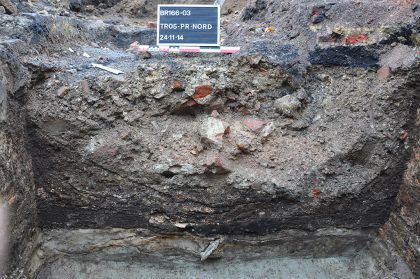What Lurked in the Intestines of Our Renaissance Ancestors?
The latest Paper of the Month for Parasitology is A comparative study of parasites in three latrines from Medieval and Renaissance Brussels, Belgium (14th–17th centuries)
In modern times intestinal parasites such as protozoa that cause dysentery and multicellular helminths (worms) are largely a problem for people in low-income countries in the tropics where sanitation and food safety are poor. However, in past centuries such parasites also posed a significant health burden on European populations. Cities lacked adequate sewerage systems and lived in close association with animals, creating the conditions necessary for the spread of intestinal parasites. Paleoparasitology, the study of parasites in past populations, can be used to highlight how our ancestors were infected by very different parasite groups, and in this way we can better understand the effect of different lifestyles, diets and sanitation upon past health.
Our study investigates the species of parasites that infected the population of Brussels during the Medieval and Renaissance periods. We analysed sediments from three latrines excavated at different sites within the city centre, using digital light microscopy and biomolecular tests (ELISA) to identify which intestinal parasite species were present between the 14th and 17th centuries. The species we identified then helped us reconstruct aspects of the way of life in Brussels at the time.

Image credit: urban.brussels – ULB.
We identified eight parasite species – roundworm (Ascaris sp.), whipworm (Trichuris sp.), Capillaria worm (Capillaria sp.), lancet liver fluke (Dicrocoelium dendriticum), Fasciola liver fluke (Fasciola hepatica), beef/pork tapeworm (Taenia sp.) and protozoa that cause dysentery (Giardia duodenalis and Entamoeba histolytica). The predominance of roundworm, whipworm and protozoa that cause dysentery in all the samples provide evidence for fecal contamination of food and drink. When we interpret these findings using textual evidence from the time these latrines were in use, it was likely due to the regular flooding of the polluted River Senne contaminating water supplies, and the use of human faeces as crop fertiliser in market gardens within the town. Notably our finding of G. duodenalis from the Medieval sample constitutes the earliest finding of this species in Belgium. Parasites from animals (zoonoses) were also found in most samples, although at much lower egg counts than the feco-orally transmitted pathogens. For example, the presence of beef/pork tapeworm indicates consumption of raw or undercooked pork or beef by the population.
The results of our study suggest a fairly stable pattern in parasite species from the Medieval to the Renaissance periods. We also found that different households were infected by very similar parasites. It is clear that feco-orally spread parasites from poor sanitation were much more common in the population than zoonotic parasites from eating raw or undercooked meat. At a time when people had no idea that parasites could be spread by poor sanitation and undercooked food, it is understandable that they could not know how to prevent themselves from getting reinfected.
The paper A comparative study of parasites in three latrines from Medieval and Renaissance Brussels, Belgium (14th–17th centuries), by Anna Graff, Emma Bennion-Pedley, Ariadin K. Jones, Marissa L. Ledger, Koen Deforce, Ann Degraeve, Sylvie Byl and Piers D. Mitchell, published in Parasitology is available free for a month.






